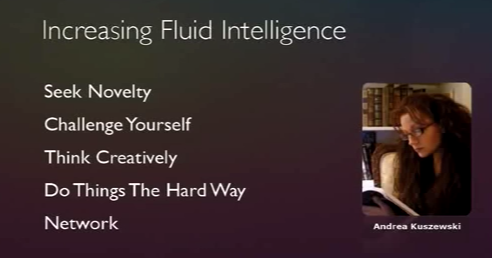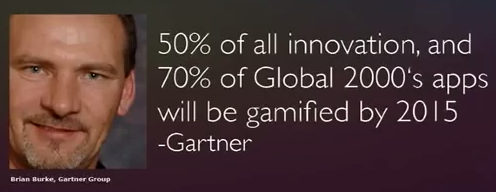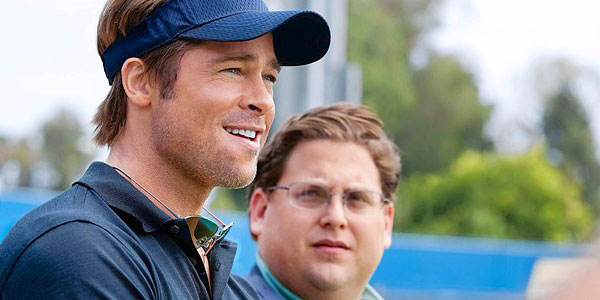Saw these quotes while reading Mary Meeker’s 2017 report. There’s lots of debate around whether kids should be playing video games, but these quotes from Elon Musk, Reid Hoffman and Mark Zuckerberg make me think that it might be okay…

Saw these quotes while reading Mary Meeker’s 2017 report. There’s lots of debate around whether kids should be playing video games, but these quotes from Elon Musk, Reid Hoffman and Mark Zuckerberg make me think that it might be okay…

Here’s a fact for you. The average IQ of the human race is increasing and the rate of increase is increasing since the 1990’s. It’s called the Flynn Effect.
I just learned that because i watched this good TED talk about video games and gamification.
He talks about what actually makes people smarter and then argues that all the items that do can be found in games. Items such as:

He also talks about a guy in White Bear Lake MN who was a successful businessman. When his kids went to school, he was appalled at the education they were getting so he quit his job, got a masters in education, and took over an elementary school class. He then replaced the entire curriculum with a video game-based curriculum.

Did it work? Well, in 18 weeks his kids went from a below 3rd grade level to an above 4th grade level. In only 18 weeks. It was because games for them were fun and multiplayer.
This speaker, Gabe Zichermann, talks about this generation of millenials, 126 million of them, and how they use games as their primary means of entertainment. This has a profound effect on society, and you can see it in the dashboard of electric cars, in Nike’s website, and all over the place.
He tells the story of a guy in Sweden, Kevin, who made a traffic camera lottery system. Before Kevin, Sweden had a system where it takes a picture of your car if it’s going over the limit, then determines how much money the drivers make, and then issues tickets at higher prices to those who make more money and lower prices for those who make less money. Kevin re-engineered the system so it also takes a picture of those people who are driving under the speed limit and it enters them into a lottery – a lottery to win all the proceeds from the other tickets from people speeding. This is game-thinking where you take a negative reinforcement loop and turn it into a positive. It works. The average speed is now 20% less than it was before.
Corporations will also be doing it:

The speech is great. Thanks to Patrick for sending it my way. All of these facts point to a future that’s pretty different than it is today. Things are faster. There are rewards everywhere. There is a lot of collaboration. I’m actually looking forward to it.
I just had an interesting breakfast with Tom Higley which i try to do once a month but ends up being about every other. He sat down this morning and said, have you seen the movie “Moneyball” and then we got into a very interesting talk about what that film means in today’s world. Here’s a few thoughts we had.

Aaron Sorkin can take any story and make it interesting. He took a horrible book about Facebook (Accidental Millionaires) and wrote a fantastic and Oscar-winning script for The Social Network, and here he took a stats-filled non-fiction book about baseball and made an interesting movie.
The story of the Oakland A’s is not as simple as it was told. They did not just find high on-base percentage players and ride that to a successful season. No sir. One thing that always beats good hitting is good pitching and there’s no mention of pitching in this entire movie. Why? Because it didn’t fit the narrative. Was their staff good? Hell, yes. The had a trio called “The Big Three” of Barry Zito, Tim Hudson and Mark Mulder. Zito was their ace. He went 23-5 and won the Cy Young award that year. Mulder won 19 games, and Hudson led the league in shutouts. That seems pretty relevant to me – you might want to mention it. Continue reading “Moneyball and Big Data”
The future is already here, it’s just unevenly distributed. – William Gibson
I did see the future this summer – just in bits and pieces. Let me explain….
As many of you know, i had an amazing experience at Techstars this summer. Not only did we evolve our company Kapost in a new and better direction, but we got to meet and interact with some incredible mentors and entrepreneurs.
 There’s a company i worked right next to this summer called Gearbox. This is two guys who are hard core robotics nerds – and i mean that in the best way. They have the only desk i’ve ever seen at a startup that has soldering irons and wrenches.
There’s a company i worked right next to this summer called Gearbox. This is two guys who are hard core robotics nerds – and i mean that in the best way. They have the only desk i’ve ever seen at a startup that has soldering irons and wrenches.
When they first arrived to Techstars, it was clear that they didn’t really know the best direction to take their company. They weren’t alone, lots of us had unclear paths. But they had a passion for robots, gaming and mobile devices and were looking for how best to apply this. As the months passed, they decided on a direction that was well aligned with this passion – which resulted in the Orbbott or the “Gearbox Ball.”
What is it? This is a robotic ball that is controlled by your iPhone or Android device. Not only is controlled but there are apps on your phone that you can use with the ball. Apps like Sumo (where you play against another ball) or Golf or, my favorite, “follow me” app. This is an application where you put the phone in your pocket and the Ball just follows you around the room. It speeds up when you’re far away and backs up if you approach it. I don’t know why, but i love this idea. It’s the best version of a robotic dog or cat i’ve heard of.
You can see a video below of them demo’ing their ball. It’s a great idea. They’ve invented a whole category of toys called “Smart Toys” and i think i’ve just seen the future. Thankfully, i was lucky enough to see it emerge from the very beginning.

Last Saturday i was part of the METal group that had breakfast with Nolan Bushnell. It was a really thought provoking. My favorite part was the beginning of the speech which he came out and said:
Ideas don’t mean shit. Everyone has good ideas. Some better than others. Only over time and work can you own an idea. Just having an idea doesn’t account for a thing, but if you spend a year making an idea a reality only then can you claim an ownership of it.
Prior to the breakfast, i had never heard of Nolan. If you don’t know who he is, let me list some of his accomplishments:
Let’s just say he’s quite a badass. At the breakfast he talked about those past ventures and some of the businesses he’s involved with – specifically bring social games back to an arcade-like area and transforming the educational system.
One piece he did talk about is how to stimulate creativity within a company. He mentioned that he has a system to do this. Saying:
With every company i’m involved with, I get the group of “thought leaders” together in a room. I then ask them to metaphorically to “keep one foot on base” and come up with what the 2-year product line should be. These are the logical products that a smart company should invest in. I typically like to redo the 2 year roadmap every 4 months.
After i get the “one foot on base” ideas, then I ask people for their wild and crazy ideas. Each person must supply one. I’m a Nazi about getting each and every person to submit at least one off-the-wall idea.
Then we take a break, play football and drink a beer and go to bed.
The next day we get back together and i ask the group how they’d implement their wild & crazy idea. Doing so tends to lend credibility to a crazy idea and makes them actually possible. I have found that more good ideas and companies come from these crazy ideas than the 2-year product roadmaps

Clay Shirky has a great speech about cognitive surplus. A phrase that refers to the free time we have away from our jobs or studies to do stuff. Over the past 30-50 years, what everyone did with this cognitive surplus is watch TV. Sitcoms were the big universal thing everyone did. In fact there is 200 billion hours of cognitive time/surplus in America that is spent watching TV. Over time however, this time spent has been shifting from TV to participatory activities like social networking to video games.

First there’s talking about participation and how it is THE new phenomenon of this generation and how it is hard to calculate. I like this passage:
The physics of participation is much more like the physics of weather than it is like the physics of gravity. We know all the forces that combine to make these kinds of things work: there’s an interesting community over here, there’s an interesting sharing model over there, those people are collaborating on open source software. But despite knowing the inputs, we can’t predict the outputs yet because there’s so much complexity.
It is a big shift from the past when we would sit and watch Price is Right all the time or other mindless crap. I loved those shows but those days are over…
This is something that people in the media world don’t understand. Media in the 20th century was run as a single race–consumption. How much can we produce? How much can you consume? Can we produce more and you’ll consume more? And the answer to that question has generally been yes. But media is actually a triathlon, it ‘s three different events. People like to consume, but they also like to produce, and they like to share.
The big concept in the speech of the idea of cognitive surplus and how that it is dwindling. We are now participating in activities. Whether it is video games, social networks, or other items online – we are doing stuff.

One good story he concludes with is:
I was having dinner with a group of friends about a month ago, and one of them was talking about sitting with his four-year-old daughter watching a DVD. And in the middle of the movie, apropos nothing, she jumps up off the couch and runs around behind the screen. That seems like a cute moment. Maybe she’s going back there to see if Dora is really back there or whatever. But that wasn’t what she was doing. She started rooting around in the cables. And her dad said, “What you doing?” And she stuck her head out from behind the screen and said, “Looking for the mouse.”
Here’s something four-year-olds know: A screen that ships without a mouse ships broken. Here’s something four-year-olds know: Media that’s targeted at you but doesn’t include you may not be worth sitting still for. Those are things that make me believe that this is a one-way change. Because four year olds, the people who are soaking most deeply in the current environment, who won’t have to go through the trauma that I have to go through of trying to unlearn a childhood spent watching Gilligan’s Island, they just assume that media includes consuming, producing and sharing.
I do like the thought of all one-way media becoming more interactive. This is definitely happening. It’s one of those concepts like “The Long Tail” that you can feel happening but it’s not until it’s written in a cohesive manner like this speech that it all comes together.
We’re looking for the mouse. We’re going to look at every place that a reader or a listener or a viewer or a user has been locked out, has been served up passive or a fixed or a canned experience, and ask ourselves, “If we carve out a little bit of the cognitive surplus and deploy it here, could we make a good thing happen?” And I’m betting the answer is yes.

Can’t wait to get my hands on it. I just saw this ad (video below) – as if i wasn’t excited enough. If you haven’t heard about the game yet, there’s a great article about what went into it in Wired. Article here.
[youtube=http://youtube.com/watch?v=vjhSp7xGsMc]
Below is a great speech by the poet Dana Gioia to the Stanford graduating class of 2007….
Stanford Commencement address by Dana Gioia, chairman of the National Endowment for the Arts (June 17, 2007)
Good morning.
It is a great honor to be asked to give the Commencement address at my alma mater. Although I have two degrees from Stanford, I still feel a bit like an interloper on this exquisitely beautiful campus. A person never really escapes his or her childhood.
At heart I’m still a working-class kid—half Italian, half Mexican—from L.A., or more precisely from Hawthorne, a city that most of this audience knows only as the setting of Quentin Tarantino’s Pulp Fiction and Jackie Brown—two films that capture the ineffable charm of my hometown.
Today is Father’s Day, so I hope you will indulge me for beginning on a personal note. I am the first person in my family ever to attend college, and I owe my education to my father, who sacrificed nearly everything to give his four children the best education possible.
My dad had a fairly hard life. He never spoke English until he went to school. He barely survived a plane crash in World War II. He worked hard, but never had much success, except with his family. When I was about 12, my dad told me that he hoped I would go to Stanford, a place I had never heard of. For him, Stanford represented every success he had missed yet wanted for his children. He would be proud of me today—no matter how dull my speech.
On the other hand, I may be fortunate that my mother isn’t here. It isn’t Mother’s Day, so I can be honest. I loved her dearly, but she could be a challenge. For example, when she learned I had been nominated to be chairman of the National Endowment for the Arts, she phoned and said, “Don’t think I’m impressed.” Continue reading “It's not all technology – the arts matter too (Dana Gioia)”
 I found these two updates today on the glorious world wide web. You know that tubular place known as the Information Superhighway. Anyway…
I found these two updates today on the glorious world wide web. You know that tubular place known as the Information Superhighway. Anyway…
Here’s a guy who developed his own Halo suite similar to that worn by Master Chief. It cost him around $15k and 2 years of his life, but it’s all worth it when you can walk around like that. The suit is protective from all bullets and explosives (and of course, women). It’s already been tested and blocked an elephant guy. You can pick one up for about 2 grand. Here’s the link. For some reason this guy wanted to see how durable the suit was and drove all the way down the East coast sitting on his armor protected ass and claimed to be completely comfortable the entire time. Now, only if he could reproduce Katana, i’d be happy.
The other item of note is that they’re making a film o f Battlestar Galactica. I just finished season 1 of this show and i think it’s great. Apparently the 2nd and 3rd seasons are some of the best around. The film, which will feature all the same cast and crew as the TV show and will bridge the gap between the show’s third and fourth seasons. If you know who these guys are, it’s being produced Ron Moore and David Eick. This is all from an interview with these guys in the Chicago Tribune.
f Battlestar Galactica. I just finished season 1 of this show and i think it’s great. Apparently the 2nd and 3rd seasons are some of the best around. The film, which will feature all the same cast and crew as the TV show and will bridge the gap between the show’s third and fourth seasons. If you know who these guys are, it’s being produced Ron Moore and David Eick. This is all from an interview with these guys in the Chicago Tribune.
 Unless you’ve been living under a stone you’ve heard of Second Life – the virtual world where real people in real places can make virtual people and virtual places. Real people and companies have been flocking to it over the past few months. Now i read that there’s the first homeless guy in there. However, this is not some guy in Second Life who’s out to just get in your way while you’re walking down the street asking for a quarter. No, this guy is the result of a non-profit in Spain who are trying to reach the young and digital.
Unless you’ve been living under a stone you’ve heard of Second Life – the virtual world where real people in real places can make virtual people and virtual places. Real people and companies have been flocking to it over the past few months. Now i read that there’s the first homeless guy in there. However, this is not some guy in Second Life who’s out to just get in your way while you’re walking down the street asking for a quarter. No, this guy is the result of a non-profit in Spain who are trying to reach the young and digital.
I think it’s great when companies get creative and go to where the people are. Second Life is full of young, affluent and social conscious people. That’s where NGO’s should be.